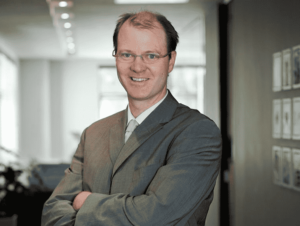
David Crosoer, Chief Investment Officer at PPS Investments
The South African (SA) economy and equity market both benefited in 2021 from the reopening of the global economy, improving commodity prices and negative real interest rates. According to the South African Reserve Bank (SARB), the SA economy should grow by 5.1% in 2021, while the equity market delivers close to 20% returns by mid-November 2021.
Despite these improved metrics, the SA economy, after having contracted by -6.4% in 2020, is not expected to regain its pre-COVID-19 growth trend any time soon, with sub-par growth of less than 2% p.a. expected in 2023 and 2024. And the SA equity market, despite improved short-term returns, has still underperformed international equity markets for more than a decade.
While short-term interest rates in SA remain at levels not seen since the 1960s, consumer inflation is now 2% higher than it was at the start of 2021, and the SARB raised rates by 0.25% at its Monetary Policy Committee (MPC) meeting held in November. In addition, compared to pre-COVID-19 levels, longer-dated SA bonds still trade at yields around 1% higher than before the crisis.
South Africa is not the only economy grappling with higher inflation, and the big unanswered question is whether other central banks will need to respond assertively with positive real short-term interest rates.
Late in 2022, the US Federal Reserve is expected to start increasing short-term interest rates, although expectations could be brought forward should US inflation prove more persistent than expected. Despite this, few commentators are expecting US inflation to remain above 3% in the medium term, and most acknowledge that the neutral rate of interest is probably closer to 2% than the 4% it was in the past.
The forward guidance from the SARB is for a further eleven 0.25% interest rate increases. In other words, unlike most other central banks, the SARB is still targeting a 2% real repo rate in the medium term. It will be interesting to see whether this will still be necessary, especially if developed economies continue to have lower real interest rates in the future.
The other profound structural shift taking place is how to transition to a greener economy. Most economies’ plans are not on track to limit global heating to less than 1.5 degrees above pre-industrial levels, and (according to MSCI) neither are 90% of listed global companies. The ability and willingness of our industry to successfully manage this transition could be the defining feature of the next few years.
South Africa is vulnerable to climate change, and our commodity basket will only indirectly benefit from the transition. Nevertheless, the transition provides an opportunity to reset the economy and reduce dependence on Eskom. While the funding that SA secured from the COP26 is encouraging, as is the greater ambition of our National Development Plan, the government lacks credibility.
Unless SA can implement the necessary structural reforms to raise its long-term growth rate above 1% p.a., it is hard to see that SA will be able to borrow at longer maturities at funding costs less than the nominal growth rate. Given the steepness of the yield curve, the market is not expecting this anytime soon.
We expect the global environment to remain supportive of equities in 2022 (the famous “There is No Alternative” (TINA) paradigm), and while SA has valuations on its side, a lack of decisiveness from the government makes it hard to identify the catalysts that will emphatically put the economy on a higher growth path.
Investors, as always, face an uncertain future, and should consciously try to construct portfolios that are resilient to different outcomes materialising, by focusing on diversification and finding managers best positioned to exploit the opportunities.


